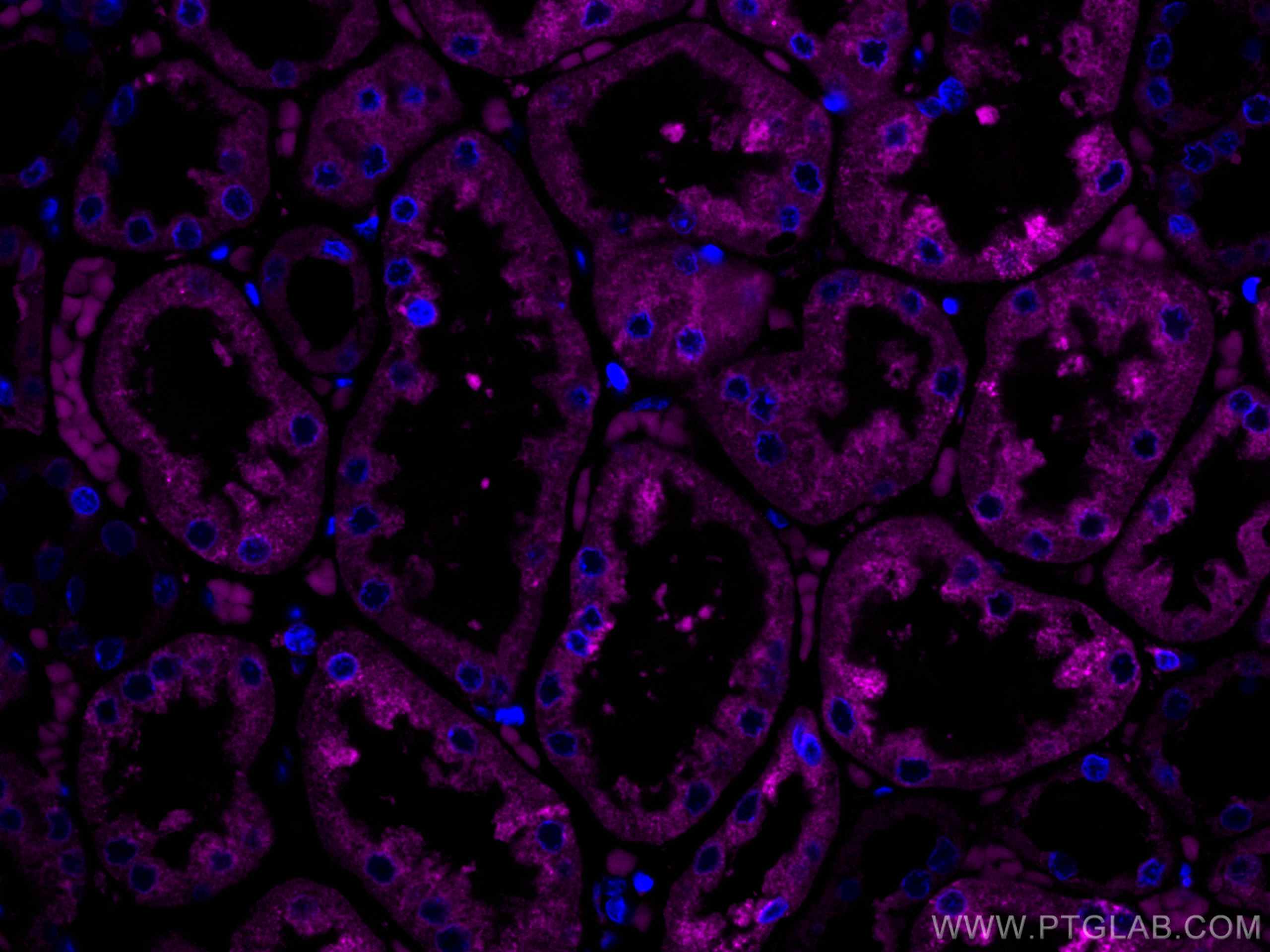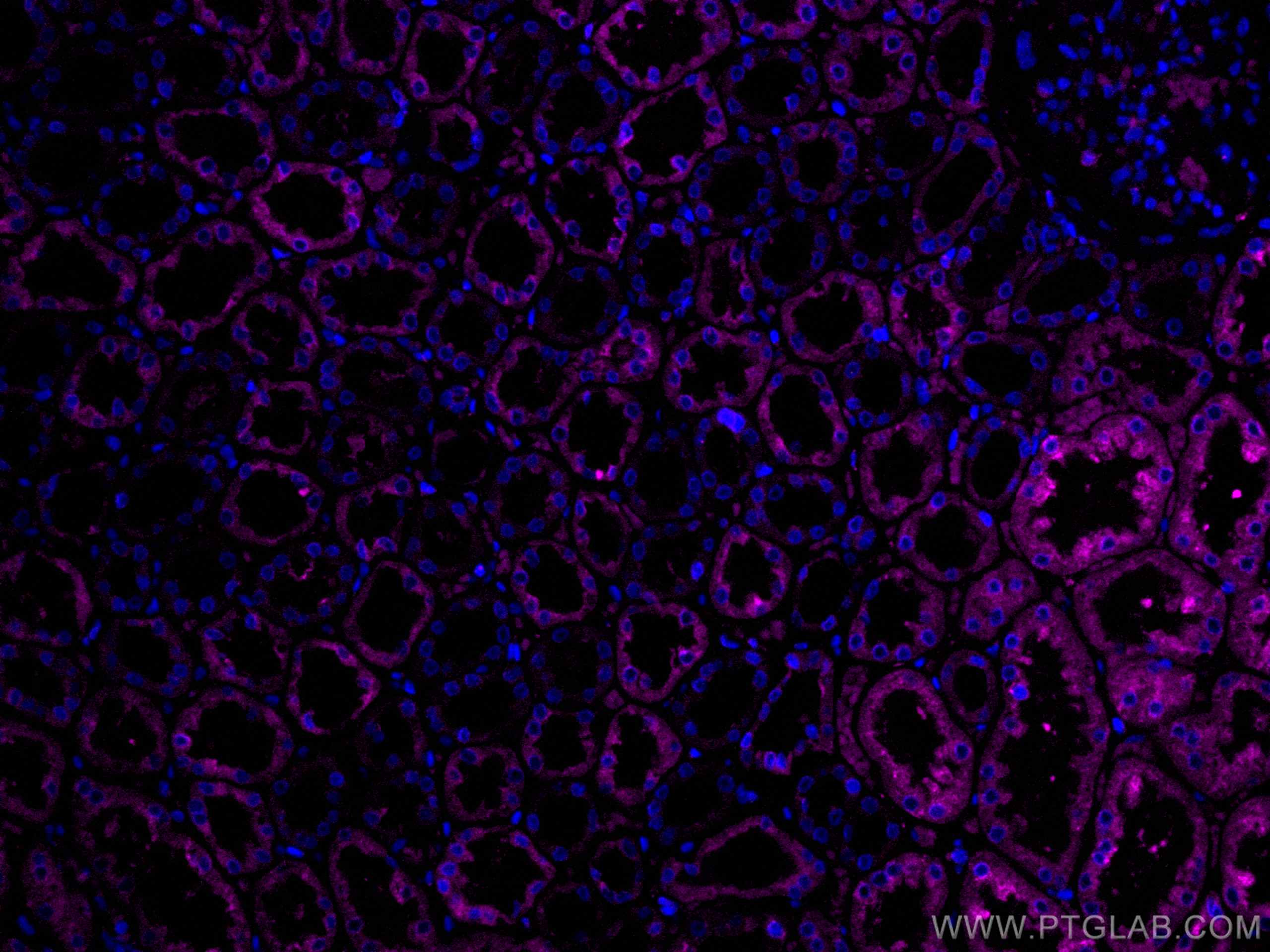ERP29 Monoklonaler Antikörper
ERP29 Monoklonal Antikörper für IF-P
Wirt / Isotyp
Maus / IgG2a
Getestete Reaktivität
human, Maus, Ratte
Anwendung
IF-P
Konjugation
CoraLite® Plus 647 Fluorescent Dye
CloneNo.
1H8B2
Kat-Nr. : CL647-67675
Synonyme
Geprüfte Anwendungen
| Erfolgreiche Detektion in IF-P | humanes Nierengewebe |
Empfohlene Verdünnung
| Anwendung | Verdünnung |
|---|---|
| Immunfluoreszenz (IF)-P | IF-P : 1:50-1:500 |
| It is recommended that this reagent should be titrated in each testing system to obtain optimal results. | |
| Sample-dependent, check data in validation data gallery | |
Produktinformation
CL647-67675 bindet in IF-P ERP29 und zeigt Reaktivität mit human, Maus, Ratten
| Getestete Reaktivität | human, Maus, Ratte |
| Wirt / Isotyp | Maus / IgG2a |
| Klonalität | Monoklonal |
| Typ | Antikörper |
| Immunogen | ERP29 fusion protein Ag30262 |
| Vollständiger Name | endoplasmic reticulum protein 29 |
| Berechnetes Molekulargewicht | 261 aa, 29 kDa |
| Beobachtetes Molekulargewicht | 29 kDa |
| GenBank-Zugangsnummer | BC101495 |
| Gene symbol | ERP29 |
| Gene ID (NCBI) | 10961 |
| Konjugation | CoraLite® Plus 647 Fluorescent Dye |
| Excitation/Emission maxima wavelengths | 654 nm / 674 nm |
| Form | Liquid |
| Reinigungsmethode | Protein-A-Reinigung |
| Lagerungspuffer | PBS with 50% glycerol, 0.05% Proclin300, 0.5% BSA |
| Lagerungsbedingungen | Bei -20°C lagern. Vor Licht schützen. Nach dem Versand ein Jahr stabil. Aliquotieren ist bei -20oC Lagerung nicht notwendig. 20ul Größen enthalten 0,1% BSA. |
Hintergrundinformationen
Endoplasmic reticulum resident protein 29 (ERP29) is a 29-kDa endoplasmic reticulum (ER) luminal protein. Structurally ERp29 is related to protein disulfide isomerases (PDI). However, it lacks the thioredoxin motif, suggesting that this protein does not function as a disulfide isomerase (PMID: 15500441). ERP29 plays an important role in the processing of secretory proteins within the (ER), possibly by participating in the folding of proteins in the ER. The secretion of thyroglobulin (TG) was found to be strongly regulated by ERP29 (PMID: 16380091).
Protokolle
| PRODUKTSPEZIFISCHE PROTOKOLLE | |
|---|---|
| IF protocol for CL Plus 647 ERP29 antibody CL647-67675 | Protokoll herunterladen |
| STANDARD-PROTOKOLLE | |
|---|---|
| Klicken Sie hier, um unsere Standardprotokolle anzuzeigen |



